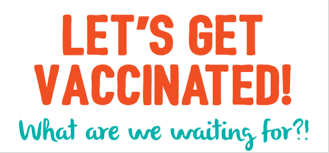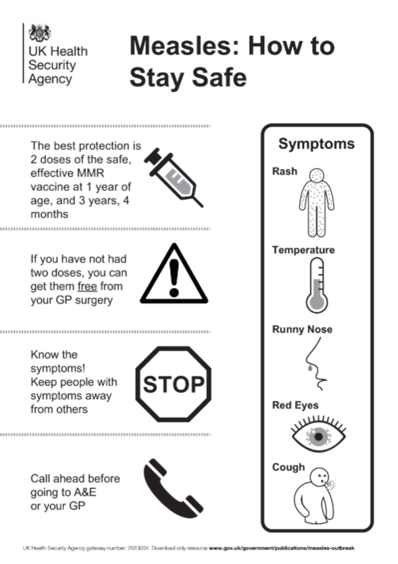

Last Updated - January 14, 2025
Information and support with understanding vaccinations
Childhood vaccinations – or jabs have been around for over 200 years starting with the first smallpox vaccine. Different vaccinations are given out at different times across childhood. But don’t worry if you or your child has missed out you can catch-up. Vaccines work by teaching your immune system how to create antibodies that protect you from diseases. Think of antibodies as your body’s defence system. It’s much safer for your immune system to learn this through vaccination than by catching the diseases and treating them. Once your immune system knows how to fight a disease, it can often protect you for many years.
Vaccines all have different names depending on what disease they are helping to protect you against. The diseases they cover may be in their medical term rather than how we know them so whooping cough has the medical term pertussis! They may also be reduced down as their long name is a bit of a tongue-twister – so Hib stands for Haemophilus Influenzae type b.
They can also be delivered to different sites – thigh, upper arm or into the nostrils.
Below lists the standard routine childhood immunisations with when you should have expected to have them, what they are for and where you will receive them.
Routine Childhood Immunisations poster
Frequently Asked Questions:
I think I’m missing some of my childhood vaccinations – how do I find out?
First step is to find out whether you have a completed red book which includes a section on your vaccination history.- You can also check your vaccination history via the NHS app.
I know I am missing some of my childhood vaccinations – how do I access them?
Contact your GP surgery to find out the best way to book in for your missed vaccinations.
I’m not sure if my child is up to date with their childhood vaccinations – how do I find out?
First step is to check your child’s red book which includes a section on your vaccination history.
If you’re not sure you took this with you to the vaccination or you can’t find it. The next step is the NHS app from here you can also view your child’s vaccination record. If you’re child has not been added to your account, please contact your GP surgery.
I know I my child is missing some of their childhood vaccinations – how do I access them?
Contact your GP surgery
Are vaccines important?
Yes! Vaccines can help prevent you or your child becoming infected. The side-effects of these diseases can cause painful and/or permanent disabilities. Vaccines also help to protect the community, we see less of these nasty infections because of the majority of the population is vaccinated – something referred to as herd immunity. This also helps to protect those who can’t get vaccinated or have low immune systems for example those undergoing cancer treatment.
Some of the vaccines such as the HPV vaccine help to also reduce the risk of cervical cancer later in life.
If you’re a young person and would like to catch up on any vaccines you have missed, these can still protect you as you head into adulthood. They’re not just for when you’re young!
Useful sites:
Spotlight on Measles: This is an infection that can spread easily for example through the sharing of utensils, towels, clothes or bedding.
It can appear like a cold with symptoms like a high temperature, runny or blocked nose, sneezing and a cough. It can include red, sore, watery eyes – which means at the first stage you may not know it is measles.
The rash will appear a few days later.
Measles can lead to more serious problems such as pneumonia, meningitis, blindness and seizures – this is why the vaccine is key to protect the community. When a child or adult has measles they can’t attend nursery, school or work for at least 4 days after the rash appears. They need to avoid close contact with babies, people who are pregnant and people with weakened immune systems. Catching measles in pregnancy can cause miscarriage or still birth, premature birth or having a baby of low birth weight.

